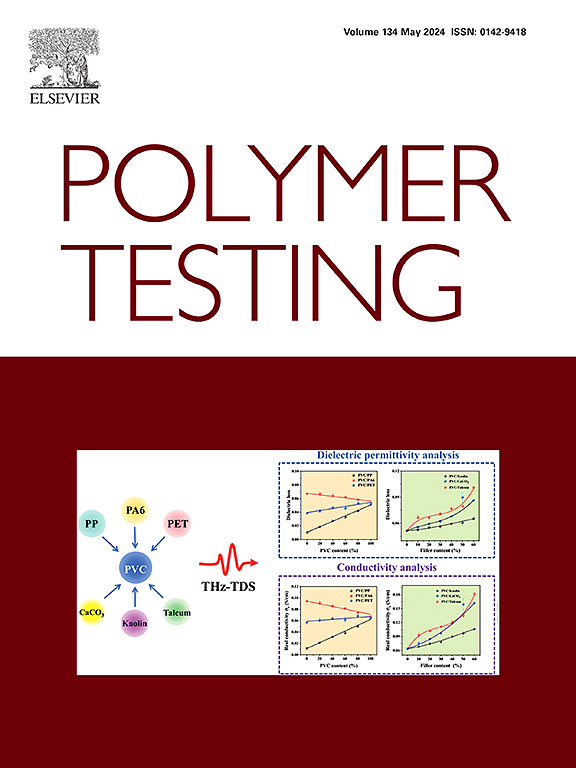Facile grafting method achieves Unprecedented dispersion stability of carbon black in PP fiber
IF 5
2区 材料科学
Q1 MATERIALS SCIENCE, CHARACTERIZATION & TESTING
引用次数: 0
Abstract
Carbon black (CB) offers valuable properties, but its tendency to agglomerate hinders its full potential in polymer applications. This study presents a novel and straightforward graft modification method to overcome this limitation. By covalently bonding organic functional groups to the CB surface, the surface energy of carbon black was significantly reduced and enhanced its compatibility with organic PP polymers. Characterization techniques (FTIR, XPS, Raman, TGA, etc.) confirm successful grafting and demonstrate excellent dispersion stability of modified CB in organic media. The modified CB exhibits uniform dispersion and reduced particle size within polypropylene (PP) fibers, leading to tensile strength increased dramatically from 103 MPa (unmodified) to 517 MPa (modified). Moreover, the strain reached 1086 %, exceeding both unmodified CB or commercial CB concentrate modified polypropylene (PP) fibers by 31 % and 11 %, respectively. This method represents a significant advancement over existing techniques by providing a straightforward and efficient approach to developing high-strength polypropylene fibers with exceptional tensile and strain characteristics for coloring synthetic fiber applications.
易接枝法使炭黑在PP纤维中的分散稳定性达到了前所未有的水平
炭黑(CB)具有宝贵的性能,但它的团聚倾向阻碍了其在聚合物应用中的充分潜力。本研究提出了一种新颖而直接的移植物修饰方法来克服这一限制。通过将有机官能团与炭黑表面共价结合,炭黑的表面能显著降低,并增强了与有机PP聚合物的相容性。表征技术(FTIR, XPS, Raman, TGA等)证实了改性CB在有机介质中的成功接枝和良好的分散稳定性。改性后的炭黑在聚丙烯纤维中分散均匀,粒径减小,抗拉强度从103 MPa(未改性)显著提高到517 MPa(改性)。此外,应变达到1086%,分别比未改性的CB和商用CB浓缩改性聚丙烯(PP)纤维高31%和11%。该方法代表了现有技术的重大进步,提供了一种简单有效的方法来开发具有特殊拉伸和应变特性的高强度聚丙烯纤维,用于着色合成纤维。
本文章由计算机程序翻译,如有差异,请以英文原文为准。
求助全文
约1分钟内获得全文
求助全文
来源期刊

Polymer Testing
工程技术-材料科学:表征与测试
CiteScore
10.70
自引率
5.90%
发文量
328
审稿时长
44 days
期刊介绍:
Polymer Testing focuses on the testing, analysis and characterization of polymer materials, including both synthetic and natural or biobased polymers. Novel testing methods and the testing of novel polymeric materials in bulk, solution and dispersion is covered. In addition, we welcome the submission of the testing of polymeric materials for a wide range of applications and industrial products as well as nanoscale characterization.
The scope includes but is not limited to the following main topics:
Novel testing methods and Chemical analysis
• mechanical, thermal, electrical, chemical, imaging, spectroscopy, scattering and rheology
Physical properties and behaviour of novel polymer systems
• nanoscale properties, morphology, transport properties
Degradation and recycling of polymeric materials when combined with novel testing or characterization methods
• degradation, biodegradation, ageing and fire retardancy
Modelling and Simulation work will be only considered when it is linked to new or previously published experimental results.
 求助内容:
求助内容: 应助结果提醒方式:
应助结果提醒方式:


